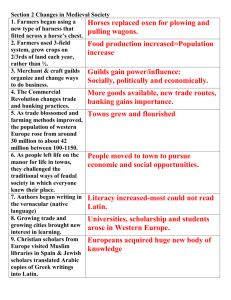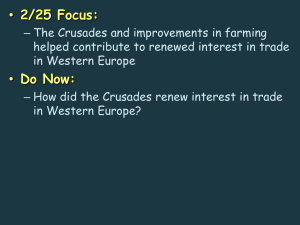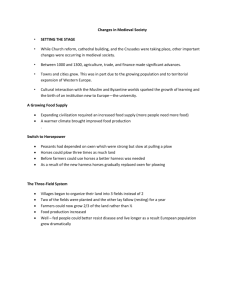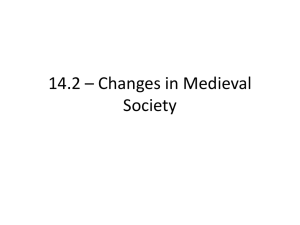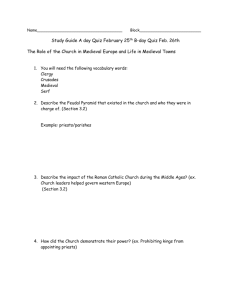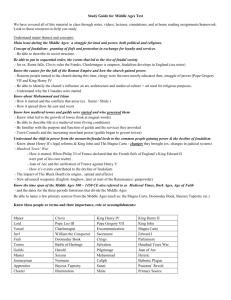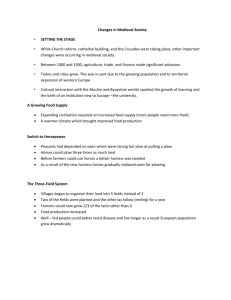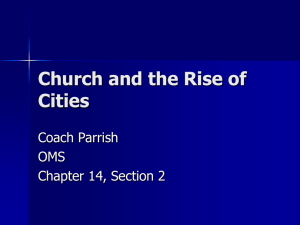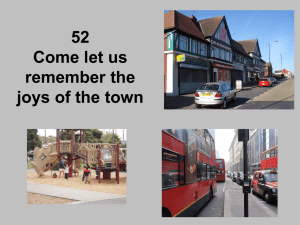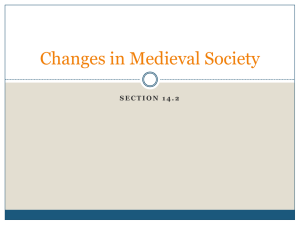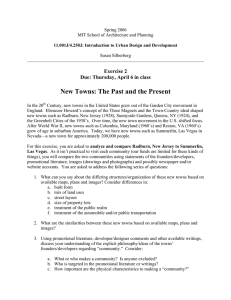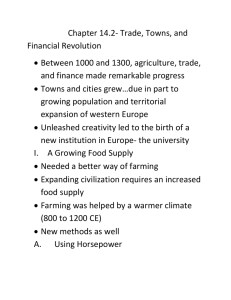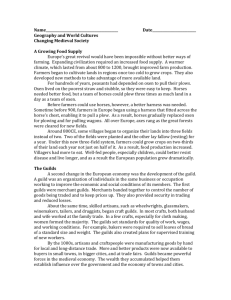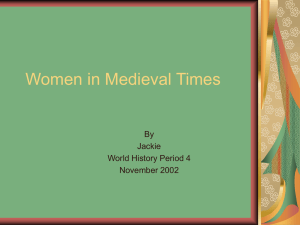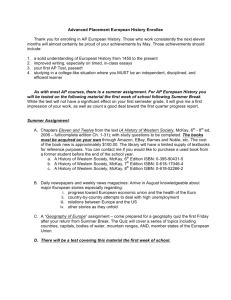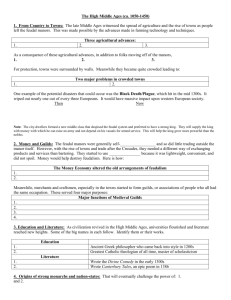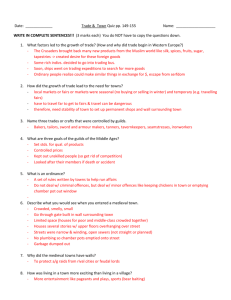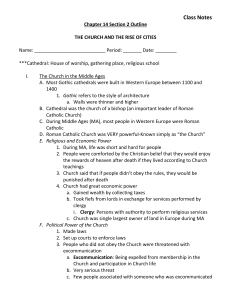Chapter 14, Lesson 2
advertisement
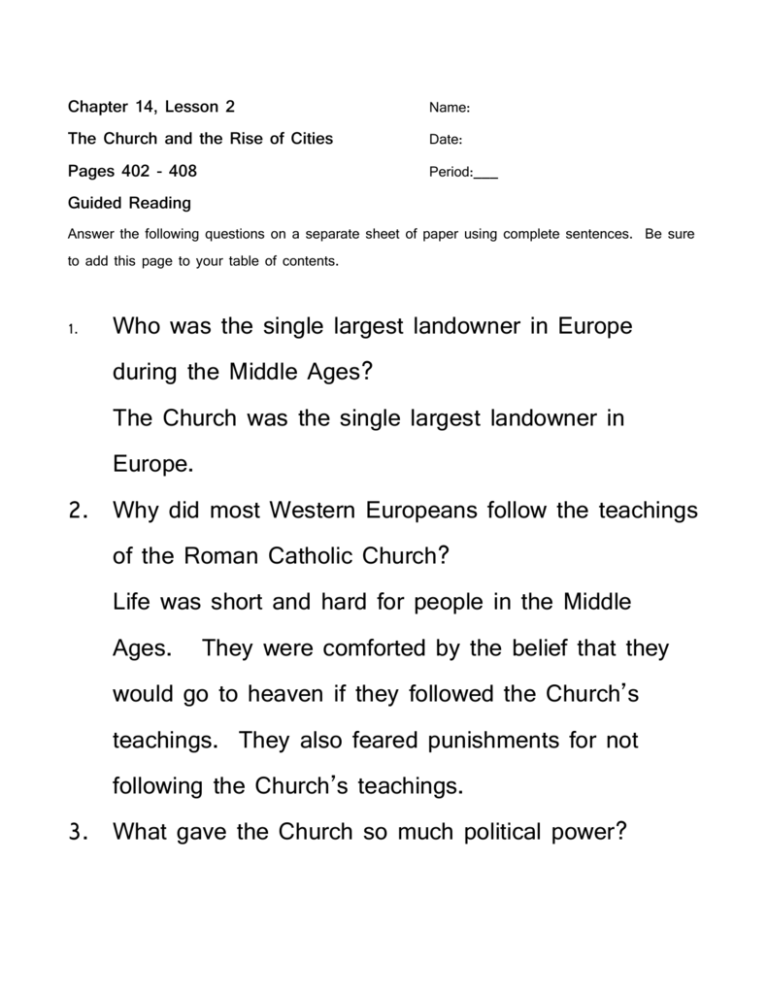
Chapter 14, Lesson 2 Name: The Church and the Rise of Cities Date: Pages 402 - 408 Period:___ Guided Reading Answer the following questions on a separate sheet of paper using complete sentences. Be sure to add this page to your table of contents. 1. Who was the single largest landowner in Europe during the Middle Ages? The Church was the single largest landowner in Europe. 2. Why did most Western Europeans follow the teachings of the Roman Catholic Church? Life was short and hard for people in the Middle Ages. They were comforted by the belief that they would go to heaven if they followed the Church’s teachings. They also feared punishments for not following the Church’s teachings. 3. What gave the Church so much political power? The combination of its religious power and the economic power from collecting taxes and being the single largest land owner in Europe. Priests were advisers to the kings, it used its authority to stop wars. The church also made the laws and made up the courts. 4. What was the job of monks and nuns? Monks and nuns developed better ways of farming, worked to improve the economy which was based on farming, looked after the sick, set up schools, copied books from ancient times, preserved the knowledge by copying books, and being a nun allowed women to receive and education. 5. When did people begin to travel in Western Europe? How did this lead to the growth of trade? Feudalism and the church made Europe a safer place so people began to travel more. People brought back goods from the places they visited and introduced them to their region. People began to want more of these goods leading to a growth of trade. 6. Identify and explain two reasons why towns grew in the Middle Ages. As trade grew, so did towns and cities. The possiblilty of a better life and freedom from serfdom drew many people from the surrounding countrysides to new towns. Kings taxed marketplaces in towns, so they encouraged more towns to be established. 7. Using the map on page 406, explain why you think places like Valencia, Rome, and Naples became such important trade centers. These cities became important trade centers because they were on the coast so it was easier to trade. 8. What new social class developed around the 1300s? Where did it fall in the social pyramid? The Middle Class of merchants, traders, and craftworkers developed. It fell between nobles and peasants. 9. What was the role the guilds played in medieval cities and towns? Guilds allowed people in the same business to work together for a common goal. They helped support needy members, trained new members, and standardized prices and the quality of goods. 10. What was the Black Death? The Black Death was the Bubonic Plague, caused by the fleas on rats that lived in the cities. 11. What were some advantages of living in a medieval city? Cities attracted traveling scholars and were centers for learning and the arts.

